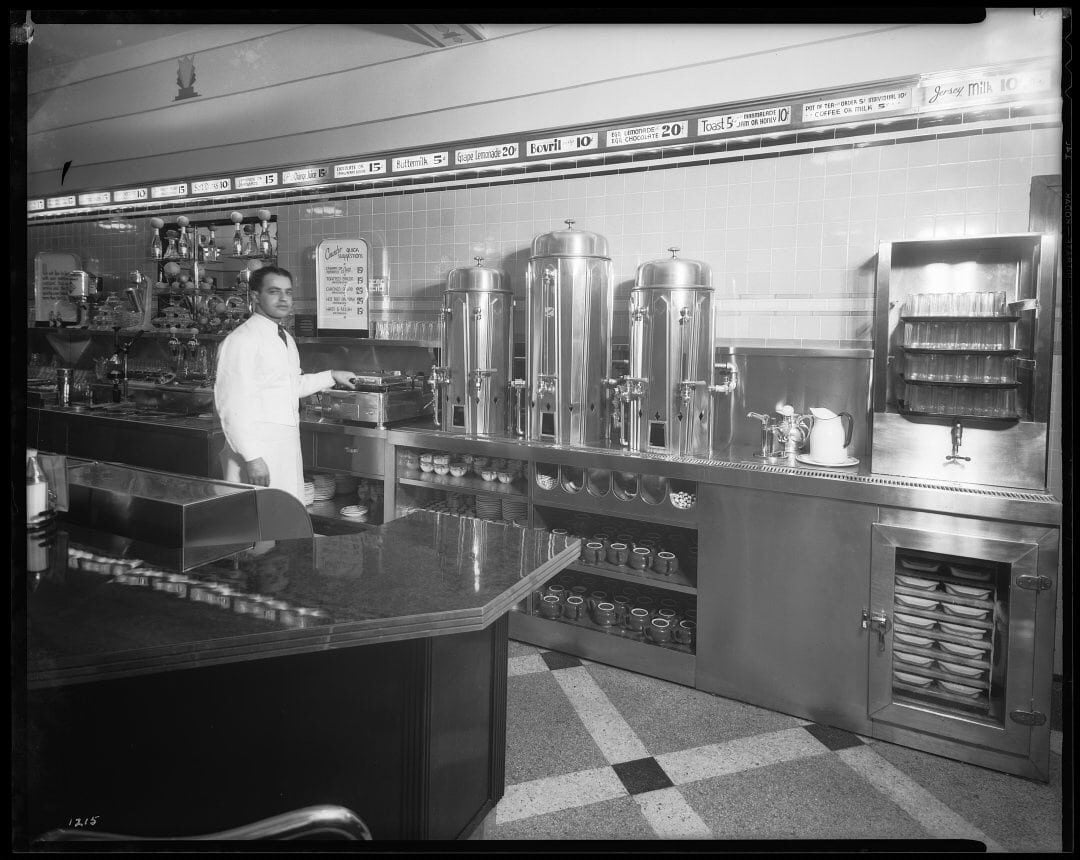

Over the last one hundred years, multiple waves of Greek immigrants have chosen to establish themselves anew in Canada, making it their new home—mainly settling in Toronto, Montreal, and Vancouver—and establishing thriving small businesses and communities while moving up in the social ladder. Now, for the first time, a new project, the “Greek Businesses in Toronto Mapping Project,” sheds light on the decades-long history and evolution of Greek businesses and life in the Canadian metropolis from the 1910s to the 1960s, when thousands of Greek immigrants set up their own small restaurants, cinemas, and even billiard halls.
The person behind this ambitious project is Alexandros Balasis, a PhD candidate in History at York University in Toronto, Canada. Born and raised in Thessaloniki, Greece, he migrated to Toronto in 2019 through a scholarship exchange program.
“Coming from a family with no migration background and having had no prior exposure to Greek communities abroad, especially in Canada, I was struck by the vibrancy of the Greek community in Toronto,” he tells Greek Reporter. “This is what drew my interest in exploring the community’s development.”
While efforts to establish the Greek Canadian Archive were initiated at York in 2012, it wasn’t until 2021 when a donation from the Hellenic Heritage Foundation (HHF) helped truly kick start the project, and Balasis came aboard. Moreover, the donation of an extensive archival collection by Michalis Mouratidis, which includes a rare 1922 Greek Canadian Guide listing Greek businesses nationwide and providing practical advice for Greek newcomers, made the “Greek Businesses in Toronto Mapping Project” possible.
Under the guidance of his supervisor, Professor Sakis Gekas, and Bill Molos, who was then the director of the HHF Greek Canadian Archive, it took almost a year for Balasis to research and visualize the project. Team members, including Alexandra Mourgou and Efrosyni Rantou, helped Balasis with the aspects of spatial mapping and anthropological approaches. In early 2025, the project came to life, providing a unique glimpse into the hidden history of Greek migration in Toronto. This is full of success stories but also of struggle and even failure as Greeks attempted to make a new life for themselves.
“A major finding was the breadth of Greek economic activity by the mid-20th century,” Balasis says. “While food services remained important, Greeks were also involved in retail, manufacturing, professional services, real estate, and even health care. This challenges the stereotypical view of the Greek restaurateur and reveals a more complete picture of Greek entrepreneurial history in Toronto.”
Another key finding according to Balasis was how business ownership was a vehicle for both the economic and social advancement of Greek migrants in Toronto.
“Early migrants who started off in low-wage jobs eventually opened their own businesses, sometimes expanding into multiple sectors,” added Balasis. “Others used their businesses as springboards to build social capital, establish philanthropic roles, and lead community institutions.”
Today, the Greek community of Toronto is a great example of how this Canadian metropolis embraces its rich multicultural background, with Greeks being an integral part of the city’s proud historical and cultural landscapes. According to the Canada 2016 Census, the Greater Toronto Area is home to over 97,000 Greeks.

The mapping of Greek businesses in Toronto provides a detailed picture of the professional activities of Greek immigrants in Canada’s most populous city.
Readers can view Greek establishments and organizations in Toronto one by one in an interactive map categorized according to decade and business type. Additionally, when possible, the map displays contemporary photos of the businesses, as well as oral testimonies from owners, employees, or customers drawn from interviews housed at the HHF Greek Canadian Archives.
Using modern Geographic Information Systems (GIS) tools, the project records, maps, and displays over 900 entries spanning over seven decades of Greek stores, restaurants, entertainment venues, garages, and travel agencies, among other things. The entries are placed on base maps from the corresponding periods, ensuring the highest possible historical accuracy. Addresses and names were gathered from Greek business directories, the first yearbooks of the Greek Community of Toronto, newspapers, and the archival material donated by Michalis Mouratidis.
“What surprised me the most was the diversity of Greek-owned businesses in Toronto, long before the 1960s,” Balasis tells Greek Reporter. “While I expected to find many restaurants and confectioneries, I also came across Greek entrepreneurs running a wide array of establishments: grocery stores, billiard halls, cinemas, hat-cleaning services, barber shops, and shoe-shine parlors to name a few. I was especially intrigued by businesses that operated in multiple locations, like chains of billiard halls or confectioneries. It became clear that certain individuals or families dominated particular sectors at times, with their influence being evident in the Greek community leadership.”

The current project is important on several levels, as it aims to promote the preservation of the Greek community’s heritage while helping highlight the broader contribution of immigrants in shaping the urban landscape of Toronto.
“For the Greek community, it helps preserve a history that is often passed down orally or is hidden in personal archives,” Balasis says. “It captures histories of work, family, and social mobility. These shaped the lives of first-generation immigrants but are rarely documented in official archives. For Toronto and Canada, it offers a more inclusive narrative of urban development…[also showing] how these contributions were not isolated but part of a broader story of city-making.”
Nonetheless, the story of Greek migration in Toronto doesn’t end here. The next step is extending the project into the 1970s and 1980s, when there was a dramatic rise in the Greek population in Canada and the diversification of business ventures continued.
“[In the 1970s and 1980s] second-generation Greek-Canadians entered professional fields, law, medicine, real estate, insurance, and finance, and launched new kinds of businesses. This is something we need to follow,” Balasis concludes.
